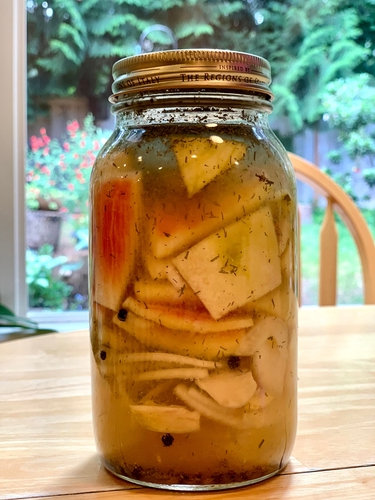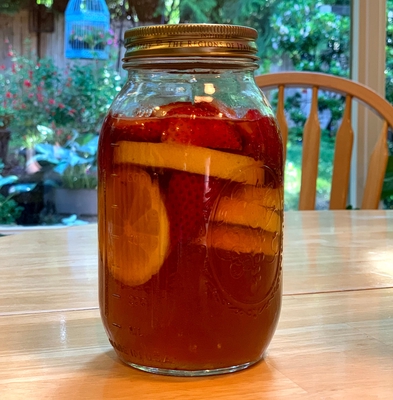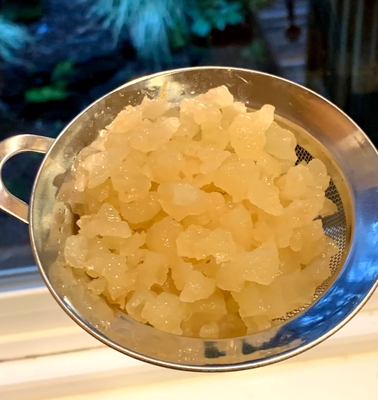I skipped the June edition of these retrospective posts, but in the spirit of not breaking a habit more than once, I’m back with July! I was hoping that COVID was pretty much “over”, but with the delta variant and my work pushing back our return-to-office until mid-October… the pandemic is very much still with us. This whole situation has been predictably unpredictable.
Aside from a record-breaking heat wave in June, the summer has been quite pleasant. Seattle gets a couple months of near-perfect (70°F, moderate humidity) weather each year, which makes up for the grey/gloomy winters.
What I’ve Been Reading
-
Project Hail Mary (4/5 ⭐️): The latest page-turner sci-fi novel by Andy Weir (who wrote The Martian). (Warning: Mild spoilers). Lots of interesting concepts explored: interstellar travel, xenobiology, communication with extraterrestrial life, civilization-scale megaprojects, and so on. My only criticism of this book is that in some parts, it kinda felt like “cliff notes” of a sci-fi novel, and asked the reader to fill in some of the blanks so that Weir could focus on the parts he was more interested in. The Audible audiobook of this was quite good.
-
The Color of Magic (2/5 ⭐️): I’ve been wanting to read some Terry Pratchett for a while, and had heard from others that Discworld is a great series. I naively decided to start from book 1, which I’ve since been informed was a mistake. The premise is cute – the world is literally “a flat planet balanced on the backs of four elephants which in turn stand on the back of a giant turtle” – but, I really just couldn’t get invested in this book at all. I didn’t connect with the humor, and… it was a slog to finish. I might give one of the standalone Discworld books a chance before writing off the series as “not for me”.
-
The Stone Sky (5/5 ⭐️): This is the final entry in N.K. Jemisin’s “Broken Earth” trilogy. Each book in this trilogy won a Hugo award, and now I understand why. Each entry in this series (somehow, remarkably) surpasses the last in scope, ambition, and storytelling excellence. The Stone Sky wrapped up the series with a very satisfying end. (You definitely need to read the books in order; jumping to this one without the previous two as context would be a challenge.)
-
A Million Miles in a Thousand Years (4/5 ⭐️): A memoir about a man editing the screenplay for a film about his life. A Million Miles walks right up to the line of “preachy self-help”, but doesn’t cross it. The thesis of this book (as I understood is) is that meaning can be found by construing one’s life as a storyline. If you aren’t able to tell yourself a compelling narrative of why you do the things you do, you need to change your circumstances. This makes sense – our memories are motivated post-hoc artifacts of our experiences; aligning our “day-to-day” experiences with a compelling narrative seems like a way of intentionally creating a satisfying retrospective sense of purpose.
Fermentation
Over the last couple months, I’ve had a renewed interest in fermentation projects. Last year, like many others, I tried to learn how to make sourdough bread – but eventually gave up after mixed results and a half-dozen failed loaves.
More recently, I’ve been making pickles and water kefir. I made a batch of really tasty dill watermellon rind pickles a few weeks ago. Never knew that watermellon rind is edible, but… it is, after sitting in brine for a few days:

Watermellon Rind Pickles
I’ve also been making water kefir continuously for over a month. It’s similar to kambucha, but the fermentation SCOBY feeds off of sugar water instead of tea. If you’ve made kambucha before, the process is similar: you do an initial fermentation to culture the liquid, and then you do a secondary fermentation which adds flavor (e.g. fruits) and carbonation.

Water Kefir in Secondary Ferment (Strawberry and Orange flavored)
The neat thing about water kefir is that the process is cyclic, and you can keep it going essentially indefinitely. Once the primary ferment is done, you can immediately start another primary ferment in a separate jar while the secondary ferment is happening. It’s also (in my experience) a more foolproof process than making kambucha.
All you need to start is some water kefir “grains” (which hold the bacteria/yeast), which can easily be bought online. Fun project.

Water Kefir Grains
Assorted Links
- 700,000 lines of code, 20 years, and one developer: How Dwarf Fortress is built
- An interview with the Dwarf Fortress developer about their development practices, and how there codebase has changed (or not) during the the game’s 20-year development.
- The Universe Is a Giant Donut That We Live Inside, New Research Suggests
- I have no idea of the veracity of this research, but it tickled my interest, as adjacent to Discworld’s “the world is a disc on the back of a giant tortoise” premise.
- Mark [Zuckerberg] in the metaverse
- An interesting interview with Mark Zuckerberg on his vision for the future of Facebook as a “metaverse” company. I wasn’t a huge fan of the social VR software included with Ocuclus’ Quest 2, but I’m still quite curious about what protocols for a distributed VR/AR “metaverse” would look like. I’ve set myself a reminder for 5 years from now to see if this is a vision that actually comes to pass. (Anyone remember the “chatbots are the future of social media” meme?)